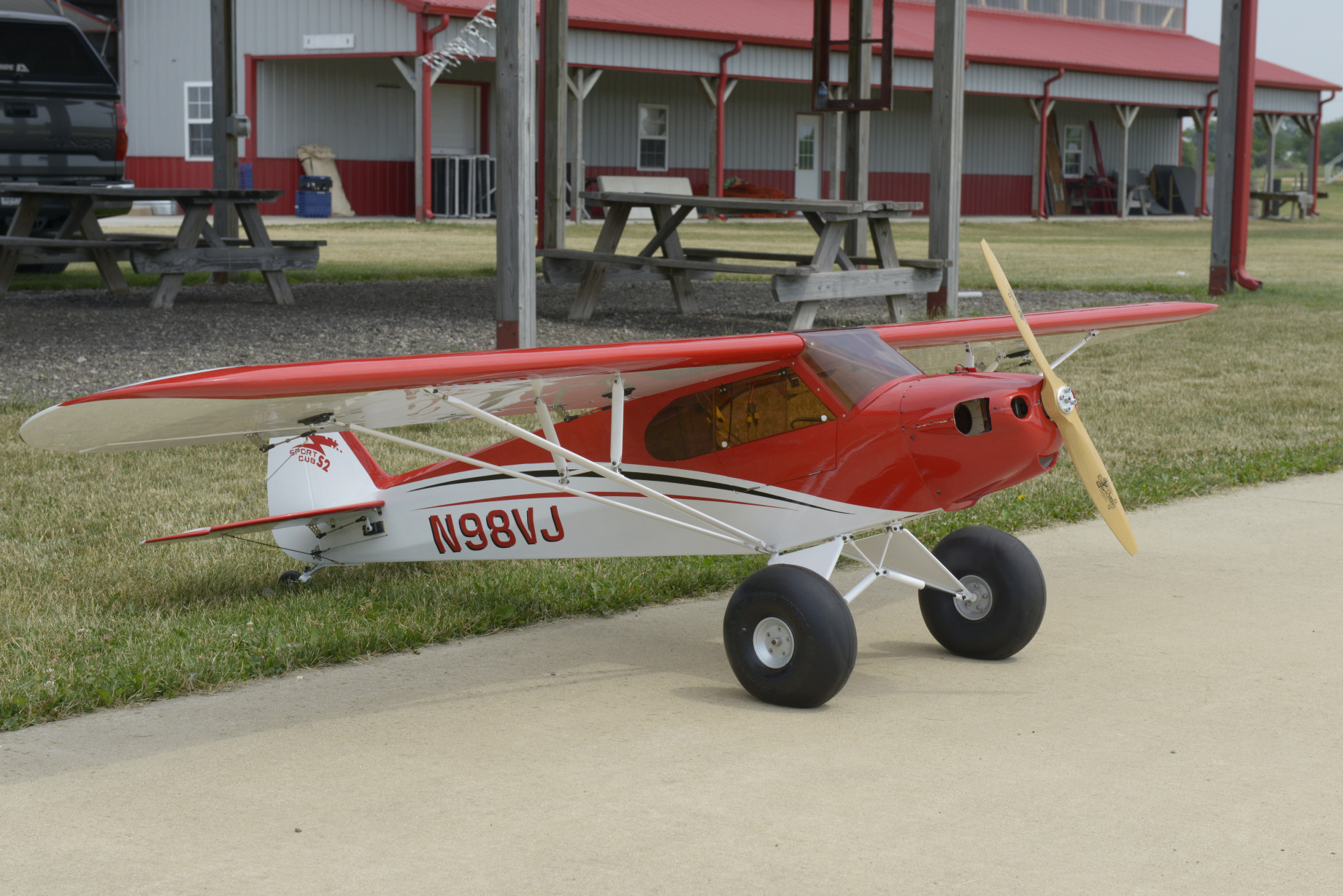26% Cub Crafters CC11-100 Sport Cub S2
Description

This aircraft is a 26% scale model of the Cub Crafters CC11-100 Sport Cub S2 developed in 2007. This aircraft uses a high wing configuration which is commonly used for trainers and aircraft in the General aviation class. The configuration provides ample longitudinal and lateral stability, making it an ideal model for the development of a trainer or for usage as a research testbed. The low wing loading of the Sport Cub reduces takeoff and landing distances, allowing the user to operate at low speeds for applications such as GIS data acquisition, sensor calibration, and autopilot development.
The aircraft was developed from a commercially available airframe made by the now defunct model aircraft company, AeroWorks. This airframe has a very good scale representation of the full scale aircraft including relative platform areas and airfoils. 3-view and isometric photos of the aircraft are available in Photos , allowing patrons to trace aircraft geometry. The wing airfoil, the USA-35B, has extensive wind tunnel testing results available as it was very popular in mid 20th century - see NACA Reports 233, 331, 412, and 628 found under Additional Resources .
The aircraft was constructed mainly following manufacturer recommendation with the exception of the propulsion system change and the power distribution added. The aircraft was originally designed intended to use an internal combustion gasoline engine, however, the aircraft was adapted to use an electric propulsion system as it provides near constant performance, increased reliability, and low vibrations. A power distribution system was installed onto the aircraft to increase control power redundancy, as it features a dual power regulator, and to help decrease the wiring complexity in the aircraft, as the unit duplicates signals allowing for the instrumentation to read these signals without requiring additional wiring harnesses. Aircraft construction photos can be found in Photos . Specifications can be found in Specifications .
The aircraft was instrumented with an Al Volo FDAQ data acquisition system. The system operates at 400~Hz and integrates with a 9 degree-of-freedom (9-DOF) XSens MTi-G-700 IMU with a GPS receiver. A pitot-static probe was installed half-way down the span of the left wing. The pilot commands were also recorded by measuring the pulse width modulation (PWM) signals generated by receiver. The propulsion system information was logged by FDAQ through an interfaces with the Castle Creations ESC. Using the sensors, the system was able to log and transmit: 3D linear and angular accelerations, velocities, and position along with GPS location; pitot-static probe airspeed; 3D magnetic field strength and heading; control surface deflections; and motor voltage, current, RPM, and power. Specifications for the instrumentation can be found in Specifications .